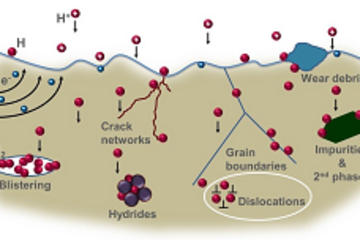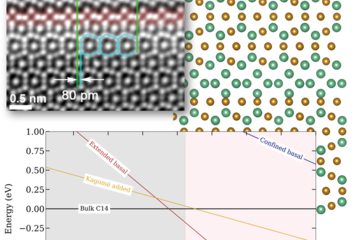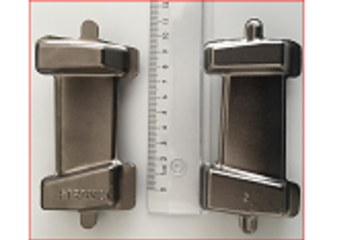All genres
1821.
Talk
Crystal Plasticity finite element method study on small scale plasticity. Deutsche Physikalische Gesellschaft 2009, Dresden, Germany (2009)
1822.
Talk
Multiscale Modeling of the Mechanics of Metallic and Biological Polycrystals using Ab Initio and Continuum Methods. MMCM 2009 Colloquium on Multiscale Methods in Computational Mechanics, Rolduc, The Netherlands (2009)
1823.
Talk
Structural investigations of the orientation patterning in plastically deformed single crystals. TMS 2009 Annual Meeting, San Francisco, CA, USA (2009)
1824.
Talk
Investigation of microstructures in single crystals: Orientation patterning phenomena. 80th Annual Meeting of GAMM 2009, Gdańsk, Poland (2009)
1825.
Talk
Microstructure in shear deformed copper single crystals. GAMM Seminar on Microstructures 2009, Universität Regensburg, Germany (2009)
1826.
Talk
3D EBSD analysis of mechanical size effects during indentation: EBSD tomography and crystal plasticity FEM. PLASTICITY 2009, St Thomas, Virgin Islands, USA (2009)
1827.
Talk
Variations in the constructional morphology of crustacean skeletal elements at different hierarchical levels. Third International Conference on Mechanics of Biomaterials & Tissues ICMOBT 2009, Clearwater, FL, USA (2009)
1828.
Talk
Extremal stiffness of crustacean cuticle through hierarchical optimization: Experiments and modeling from ab initio to macroscale. PLASTICITY 2009, St. Thomas, Virgin Islands, USA (2009)
1829.
Talk
Crystallographic Texture Evolutions in Chemical-Vapor-Deposition Diamond Films. MRS Fall Meeting 2009, Boston, MA, USA (2009)
1830.
Talk
Polycrystal coarse graining of elastic properties for Ti-Nb biomedical grades using ab-initio single crystal elastic constants. International Plasticity Conference 2009, Virgin Islands, USA (2009)
1831.
Talk
Modeling of the mechanical properties of lobster cuticle from ab initio to macroscale: How nature designs multifunctional composites with optimal properties. International Plasticity Conference 2009, Virgin Islands, USA (2009)
1832.
Talk
Mechanical alloying and amorphization in Cu–Nb–Ag in situ composite wires studied by TEM and atom probe tomography. MRS 2009 Fall Meeting, Boston, MA, USA (2009)
1833.
Talk
Experimental investigation of geometrically necessary dislocations beneath small indents of different depths using EBSD tomography. MRS 2009 Fall Meeting, Boston, MA, USA (2009)
1834.
Talk
The Crustacean Cuticle: A Model to Study the Influence of Chemical Composition and Microstructure on the Mechanical Properties of a Biological Composite Material. MRS Fall Conference 2008, Boston, MA, USA (2008)
1835.
Talk
Atomic Structure and Elastic Anisotropy of Crystalline α-chitin: An Ab-initio Based Conformational Analysis. MRS Fall Conference 2008, Boston, MA, USA (2008)
1836.
Talk
Grain Boundary Engineering in Copper Through-via Silicon Interconnects. MRS Fall Conference 2008, Boston, MA, USA (2008)
1837.
Talk
Ductility of Gamma-TiAl-Based Microstructures in the Light of Deformation Mode Interaction-Crystal Plasticity Modeling and Micro-Mechanical Experiments. MRS Fall Conference 2008, Boston, MA, USA (2008)
1838.
Talk
Multiscale Prediction of Polycrystal Elastic Properties of Ultralight Weight Mg-Li Alloys using Ab Initio and FEM Approaches. MRS Fall Conference 2008, Boston, MA, USA (2008)
1839.
Talk
Quantification of Geometrically Necessary Dislocations Beneath Small Indents of Different Depths Using EBSD Tomography. MRS Fall Conference 2008, Boston, MA, USA (2008)
1840.
Talk
Application of Spectral Methods for Anisotropy Design of Ti-Nb Polycrystals for Biomedical Applications based on ab Initio Elastic Single Crystal Constants and Fast Fourier Homogenization. MRS Fall Conference 2008, Boston, MA, USA (2008)








